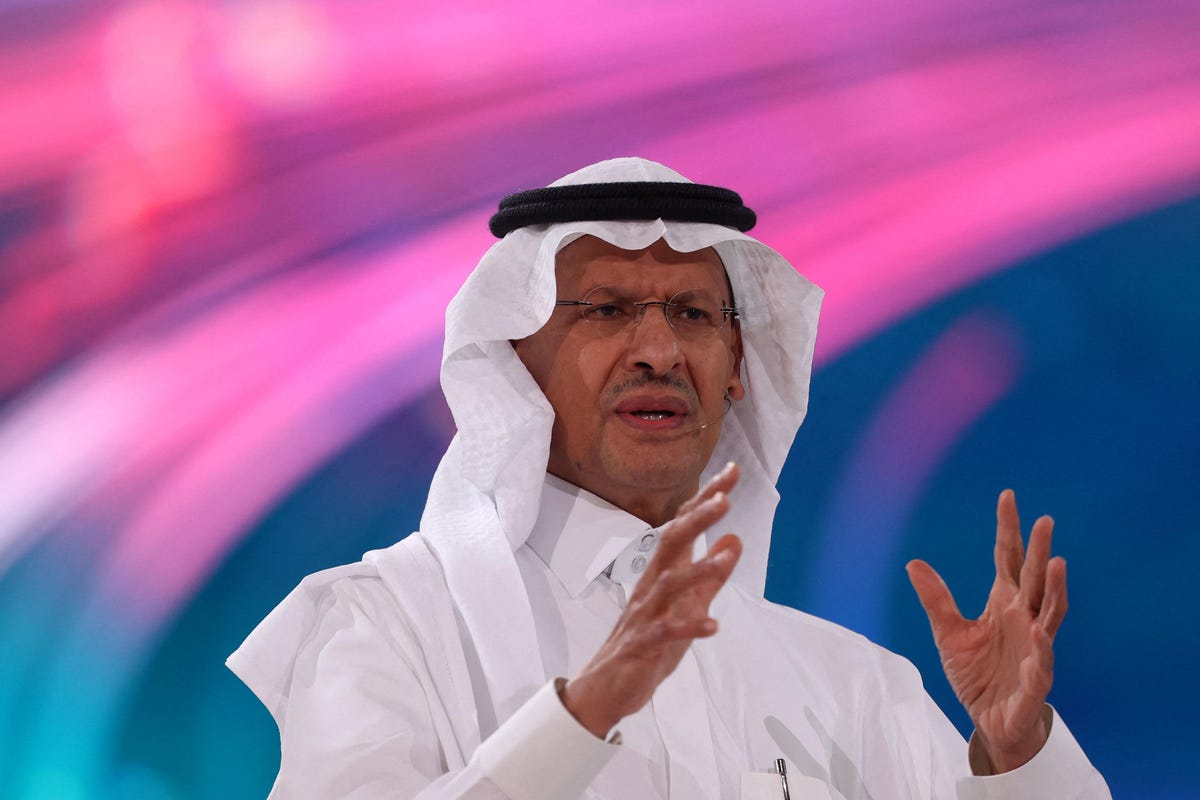Exasperated at Biden, and flexing new market share muscle, OPEC announces surprise cuts of 1.66 million barrels per day.
Last year the Biden Administration said it intended to halt its historic emergency sales of oil from the Strategic Petroleum Reserve, and it would start refilling the 180 million barrels when prices fell to the lower $70s. Yet even as oil fell into the $60s recently, the administration refused to move.
Presumably the president was looking for even cheaper oil. “We don’t think cuts are advisable at this moment given market uncertainty,” said a White House spokesperson. Biden has repeatedly called on OPEC to open wide their spigots in order to keep prices low and Vladimir Putin’s finances squeezed. Indeed, the average price for Russia’s Urals blend crude oil was $47 a barrel in March, well below the $60/bbl price cap imposed by Ukraine’s defenders.
But Biden jawboning is not enough of an incentive to keep the crude flowing. OPEC wanted to see big buyers step up. Saudi Oil Minister Abdulaziz bin Salman even said last fall that, “It is my profound duty to make it clear to the world that losing emergency stocks may become painful in the months to come.” The Saudis were reportedly looking to make a deal to sell 500,000 bpd for a year to refill the U.S. SPR, at a desireable price. But even as oil prices slid, the administration refused to move on the offer. Which with OPEC’s surprise cuts over the weekend, is now effectively canceled.
The Saudis said the weekend’s surprise cuts were “a precautionary measure to support market stability” and that they would reduce output by 500,000 bpd, with 1.1 million bpd more from the rest of OPEC. This is on top of 2 million bpd in announced cuts last fall. Analysts figure that the impact will be to increase OPEC’s cushion of spare supply capacity to 3 million bpd. (Total global demand is 100 million bpd.)
Exasperation with Biden SPR policy “may have contributed to the OPEC+ decision to cut too” writes Goldman Sachs analysts Daan Struyven and Jeff Currie today. This is OPEC flexing its muscles, they say, to stomp out recent price weakness amid consensus expectations that oil markets wouldn’t get particularly tight until 6 months from now. Goldman’s team now predicts $95 oil by the end of this year, and figures that higher per-barrel revenues will more than offset lower volumes. Relative to recent years, OPEC has significantly more pricing power, says Goldman. And their new doctrine is to act preemptively at the first sign of potential market weakness, because they can do so with risk of losing market share.
What enabled that dynamic? The maturation of America’s shale frackers. All the best stuff in the Eagle Ford, Bakken and Permian has about been drilled through. And even if companies do have plenty of spots left to drill, they intend to harvest them at a measured pace. The U.S. is expected to grow oil output at most by 500,000 bpd this year, versus the banner year of 2018, when they ramped by 1.7 million bpd to a domestic record of more than 12 million bpd — before Covid hit.
This year America’s frackers are running 800 onshore drilling rigs, less than half the number of a decade ago.
Commodities trading billionaire John Arnold posted this graphic on Twitter showing the difference. “With much less supply elasticity in the market today, OPEC is less worried about losing market share if it defends higher prices,” Arnold tweeted.
OPEC’s move continues the trend of financial market tightening. As Central Banks like the Federal Reserve have been tightening financial liquidity by raising interest rates, so too is OPEC now tightening the literal liquidity of global petroleum supplies. Like higher interest rates, more expensive fuel is a direct economic drag.
At midday Monday oil prices have jumped 5%, with front-month crude oil on NYMEX trading at $80.50. Stocks are up, with Chevron
CVX
XOM
OXY
If OPEC is cutting because it senses significant deterioration of demand ahead, those gains could soon vanish. According to Credit Suisse data, the average publicly traded American independent oil and gas producer trades at just under 5 times expected 2023 distributable cash flow.
Not a bad valuation for companies that now find themselves, by default, set to benefit from OPEC’s new aggressiveness.
Read the full article here










